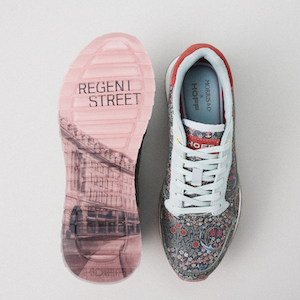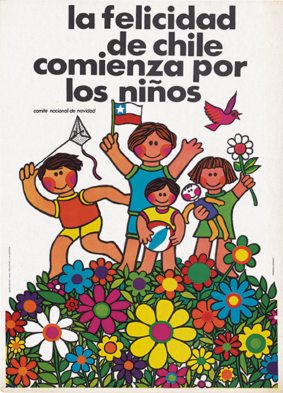Create; Social Change
By Heather Pantling
Create; social change, and how art has been used to break down barriers.

Creativity is one of the most beautiful ways in which social barriers can be broken. It is a means of expression that can evoke the most powerful message. Here at .Cent we have picked out a few pieces and discover how creativity has been used as a vehicle of social change:
Fashion
In 1984 Margaret Thatcher held a reception to celebrate London Fashion Week. A young attendee, Katherine Hamnett, revealed her politically charged shirt ‘58% don’t want perishing’. The shirt caused quite a stir and, according to Hamnett, apparently caused the prime minister to ‘squawk like a chicken’.
The shirt was in reference to a referendum regarding American nuclear missiles on British soil, in which, 58% of the electorate voted against. Hamnett’s shirt was just the start of her long career in politically charged collections. A supporter of gay rights, and AIDS activism, Hamnett also created the hugely recognisable ‘Choose Life’ shirt, as worn by the late George Michael in the same year. Evidently, Hamnett took a novel approach, using fashion to create social change.
There has long been a strong relationship between fashion and social change. Designers have often used their collections as a vehicle to convey powerful messages, whether it be environmental, political or economic.

Fashion can advance social change because it forces you to stop and look. Bold statements on shirts, dresses, bags, whatever it may be, must be read, and time must be taken to admire their message.
Sculpture
American artist Betye Saar took her opportunity to champion black power in 1972. After an open call for artwork at the Rainbow Sign community center in Berkley, California, Saar created her iconic piece, The Liberation of Aunt Jemima. ‘Aunt Jemima’ is viewed an offensive embodiment of black stereotypes, and the ‘mammy‘ figure in American culture. The caricature has also been accused of glorifying plantation work, because ‘Aunt Jemima’ essentially worked for the white master as the housekeeper. The inspiration for Saar’s piece followed the death of Martin Luther King Jr, and she felt that attention must be drawn to the black civil rights movement.
The figure in Saar’s work would typically be holding a mop and brush, as she carried out domestic duties. Instead, Saar has replaced the mop with a rifle. A hugely powerful artwork, looking at the systematic racism of society at the time, Saar used art to Create; Social Change.

Art
Picasso’s 1937 work, Guernica, brought international attention to the Spanish civil war. At the request of Spanish nationals, led by General Franco, Nazi war planes bombed the village of Guernica in northern Spain. So outraged by the needless deaths of civilians, Picasso created the black and white oil canvas at his home in Paris. The chaos depicted, the muted colors, and the matte finish express the devastation of war. Picasso also lived in Paris during the Nazi occupation. It is rumored that an officer once said to him ‘you did this’ to which he responded, ‘no you did’. Guernica is an internationally recognized artwork, but the political message behind it is sometimes disregarded. It is not always known that Picasso created this work in response to war, and that at its heart is an anti-war message.

Chinese artist, Ai Weiewi created Remembering in 2009. An instillation displayed in Munich, made from 9000 children’s backpacks. The artwork pays homage to the children that died in the 2008 Sichuan earthquake. Other famous artworks include Dmitri Vrubel’s ‘My God help me survive this deadly love’, Norman Rockwell’s ‘The Problem we all live with’ and Alex Arnall’s ‘Lego Queen’.
Music
Rather than a visual symbol, which can be taken purely on face value, music has the power to create a subliminal message. Initially, music is judged only on the tune. But, by listening to the lyrics another message can be uncovered, and a deeper meaning deciphered. we known rap music can often be about social change or highlight disparity but message music can be seen from the earliest of time.
Take as example a slightly less obvious example; Robert Wyatt and Elvis Costello’s 1982 song Shipbuilding was written during the Falkland’s war. It examines how the dying British Shipbuilding industry could have been revived during the war, yet in the same breath, the lives of sons who built the ships will be lost. It is only by listening to the lyrics that this meaning is truly uncovered. Otherwise, the slow, almost melancholy tune, would be taken as a slow ballad, and its political message overlooked.
Music is a truly powerful medium through which to convey a message.
Loch Lomond is a traditional Scottish song, often sung in lieu of Flower of Scotland. Its catchy tune actually hides a politically charged message. It emerged as a result of the Jacobite political culture in the mid 19th century, at a time Scotland was seeking independence from the British. There are many interpretations of the song, but it is likely that its meaning stems from the rebellion of Bonnie Prince Charles in the 1700’s. Now a folk song, Loch Lomond is a song of independence.
Film and Literature
White Riot is the 2019 documentary that explores ‘Rock Against Racism’. Using a blend of interviews and archive footage, the documentary paints a picture of 1970’s Britain. It comes after singer Eric Clapton’s infamous onstage meltdown, declaring his support for anti-immigration MP Enoch Powell. Rock Against Racism resultingly formed, and took aim at fighting inherent racism in the UK, through the medium of music. Directed by Rubika Shah, the film attempts to recreate the hysteria of the period, the anti-immigration fervour and the political tennis match being played out in UK politics.
Boris Pasternak’s Dr Zhivago is a one of the most influential books of the 20th century. Brought to life on screen by Omar Sharif, the tragic plot of Yuri Zhivago and his ill-fated love affair with Lara is truly iconic. Yet at its heart, Pasternak’s work is politically charged. Based partly on his own experiences under the Soviet government, Pasternak takes aim at the regime’s brutality. The book was so controversial at the time of its publication that it was banned in Soviet Russia until 1957, and published in Europe only because it had been smuggled out of the country. The story behind the Pasternak’s work, is just as inspiring as the work itself. Pasternak effectively used art to create social change and take a stand against the repressive government.

There is a beauty within art that evokes a powerful message. Create; Social Change.
Enjoyed this piece Create; Social Change.? Check out some of the best designers of Summer 2020.





